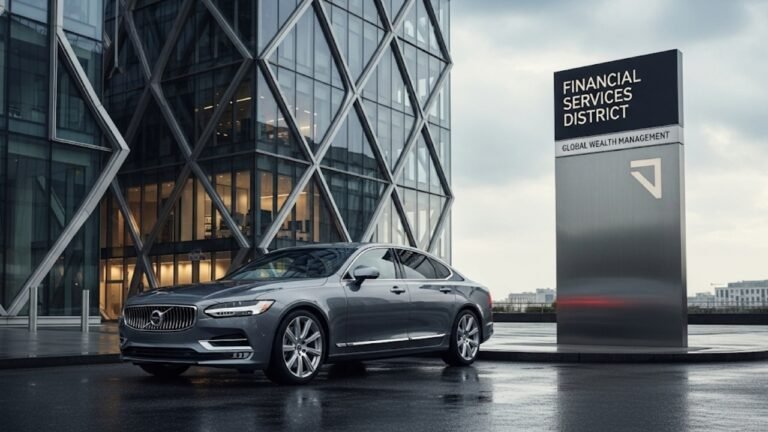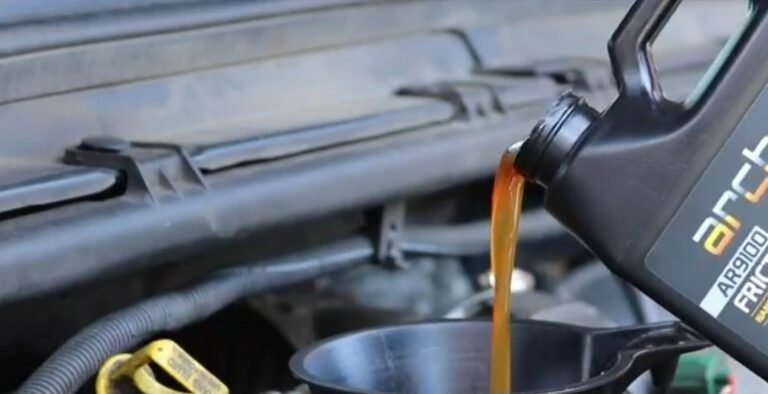Window Tint Laws by State [Updated 2026]
![Window Tint Laws by State [Updated 2026] 1 Window Tint Laws by State [Updated 2026]](https://aautomotives.com/wp-content/uploads/2025/10/Window-Tint-Laws-by-State-Updated-2026.jpg)
Window tinting isn’t just about style—it’s about privacy, comfort, and protection from harmful UV rays. But before you roll up to a tint shop, it’s crucial to understand the window tint laws by state. Each state in the U.S. has its own regulations, covering how dark your tint can be, which windows can be tinted, and whether reflective or colored films are allowed. Ignoring these rules can lead to fines, citations, or even more severe consequences.
Think of it like this: tinting your car is like adding sunglasses to your vehicle. While it enhances comfort, not every shade is legal everywhere. Our updated 2026 guide will help you navigate these laws, so you can tint with confidence while staying compliant. Whether you’re a new driver or a seasoned car owner, this guide is your roadmap for safe and legal tinting.
In This Article
- 1 Understanding the Basics: Key Tinting Terminology
- 2 Why Window Tint Laws Exist
- 3 State-by-State Overview of Window Tint Laws
- 4 Choosing the Right Tint for Your Vehicle
- 5 Common Exceptions and Medical Exemptions
- 6 Detailed State-by-State Tint Regulations (2026 Update)
- 7 Tips for Staying Compliant Nationwide
- 8 Frequently Asked Questions (FAQs)
- 8.1 1. What does VLT% mean and why is it important?
- 8.2 2. Can I tint my windshield fully?
- 8.3 3. Are there medical exemptions for darker tints?
- 8.4 4. Do reflective or mirrored tints affect legality?
- 8.5 5. Can I tint my back windows darker than the front?
- 8.6 6. What are the penalties for violating tint laws?
- 8.7 7. Do tint laws differ for SUVs and multi-purpose vehicles?
- 9 Balancing Style, Comfort, and Compliance
- 10 Final Thoughts: Driving Confidently in 2026
Understanding the Basics: Key Tinting Terminology
![Window Tint Laws by State [Updated 2026] 2 Understanding the Basics Key Tinting Terminology](https://aautomotives.com/wp-content/uploads/2025/10/Understanding-the-Basics-Key-Tinting-Terminology.jpg)
Before diving into state-by-state rules, it’s important to understand some common terms. Knowing these will help you interpret the laws accurately.
-
VLT% (Visible Light Transmission): This is the percentage of visible light that can pass through your tinted window. The lower the VLT%, the darker the tint. For example, a 30% VLT means only 30% of light passes through.
-
Front-side windows: Driver and passenger windows in front. Most states allow lighter tints here to ensure visibility.
-
Rear-side windows: Windows behind the driver and passenger. These can often have darker tints than the front.
-
Rear window: The back windshield, which has its own rules and sometimes requires dual side mirrors if heavily tinted.
-
Windshield tint: Only the top portion of the windshield, usually above the AS-1 line, can be tinted in most states. Full windshield tinting is rarely allowed.
Understanding these terms ensures you stay within legal limits while enjoying the benefits of tinting. Remember, some states also regulate color and reflectivity, which can affect your tint choices.
Why Window Tint Laws Exist
It might seem like some states are overly strict, but there’s a reason. Window tint laws are primarily about safety. Dark tints can reduce visibility for the driver and make it harder for law enforcement to see inside the vehicle.
Additionally, reflective or mirrored tints can cause glare, potentially leading to accidents. Some states allow exceptions for medical conditions, but they usually require documentation from a healthcare provider.
Here’s the bottom line: following window tint laws protects you, your passengers, and other drivers. Think of it as a balance between style, comfort, and road safety. Staying informed prevents fines, ensures smoother inspections, and keeps your car compliant with 2026 regulations.
State-by-State Overview of Window Tint Laws
The U.S. has 50 states plus D.C., and tint laws vary significantly. Here’s a snapshot of some states with their VLT limits and special rules:
| State | Front Side Windows | Rear Side Windows | Rear Window | Windshield Tint | Reflectivity | Other Restrictions | Penalty |
|---|---|---|---|---|---|---|---|
| California | 70% | Any | Any | 4 inches | Std. max | No red, amber, blue. Dual side mirrors for back | 1st warning; $25-$197 fines |
| Florida | 28% | 15% | 15% | Above AS-1 | 25% max | Dual side mirrors for back | $100 fine if not fixed |
| Texas | 25% | 25% | Any | 5 inches/AS-1 | 25% max | Red, amber, blue not allowed | $20-$275 depending on offense |
| New York | 70% | 70% | Any | 6 inches | No metallic | Dual side mirrors for back | Up to $150 |
This table is just a glimpse of the 2026 laws. Many states have nuances—for instance, Alaska prohibits red or yellow tints, while Arizona allows tints to the top of the AS-1 line for the windshield.
Choosing the Right Tint for Your Vehicle
When selecting a tint, consider both legality and comfort. A darker tint may look sleek, but if it violates state law, you risk fines or being pulled over. Here’s a practical approach:
-
Check your state’s VLT limits: This is the most important factor.
-
Consider reflective restrictions: Some states restrict metallic or mirrored tints.
-
Think about color: Certain shades like red, amber, or blue may be illegal.
-
Remember rear visibility: If your rear windows are heavily tinted, dual side mirrors may be required.
By balancing these factors, you get the benefits of privacy, UV protection, and cooler interiors while staying compliant with your state’s laws.
Common Exceptions and Medical Exemptions
Several states offer exemptions for people with medical conditions. For instance, light-sensitive conditions or photosensitivity disorders may allow darker tints than legally permitted. However, these exemptions usually require:
-
A doctor’s note or medical certificate
-
Registration with the state DMV
-
Tinting limited to the amount specified in the medical exemption
Always carry documentation while driving. Even if your tint is legal under a medical exception, law enforcement officers may still request proof. This ensures smooth traffic stops and prevents unnecessary fines.
Detailed State-by-State Tint Regulations (2026 Update)
Understanding each state’s rules in depth is essential for vehicle owners. Here’s a more detailed look at window tint laws by state, focusing on front-side, rear-side, rear window limits, reflectivity, and special restrictions.
Alabama
Alabama allows 32% VLT on all side and rear windows, with 6 inches of windshield tinting permitted. Reflectivity is capped at 20%, and there are no color restrictions. Penalties escalate with repeated offenses: $100 for the first, $200 for the second, and $500 with possible jail time for subsequent violations. Alabama drivers are advised to check local regulations before installing aftermarket tints, as even minor deviations can result in fines.
Alaska
In Alaska, front-side windows must maintain 70% VLT, while rear-side and rear windows are allowed 40% VLT. No metallic or mirrored tints are permitted, and red, yellow, or amber colors are banned. Officers may issue a warning for incorrect coloring, with fines up to $300 if not corrected. These regulations reflect Alaska’s emphasis on visibility during extreme weather conditions, where clear sightlines are critical for safety.
Arizona
Arizona permits 33% VLT on front windows, while rear and back windows can have any tint. Windshield tinting is allowed only up to the manufacturer’s AS-1 line. Reflectivity cannot exceed 35%, and red or amber tints are prohibited. Vehicles with back window tinting must use dual side mirrors. Fines can reach $250, so Arizona drivers should carefully measure VLT levels before installation. Many opt for a lighter front tint to avoid traffic stops, especially in bright desert conditions.
California
California’s laws are some of the strictest in the country. 70% VLT is required for front-side windows, while rear windows can have any tint. Windshield tinting is limited to 4 inches from the top, and reflective tints are restricted. Colors like red, amber, and blue are illegal, and dual side mirrors are required for back-tinted vehicles. Fines range from warnings to $197 for repeated violations, making compliance essential to avoid penalties.
Florida
Florida mandates 28% VLT for front-side windows and 15% VLT for rear-side and rear windows. Windshield tinting is allowed above the AS-1 line only, with a maximum reflectivity of 25%. Dual side mirrors are required if rear windows are tinted. Violations typically result in warnings or fines of around $100 if not corrected within a specified timeframe. Florida’s climate makes window tinting highly desirable for sun protection, but compliance with strict VLT limits ensures safety on the road.
Tips for Staying Compliant Nationwide
While each state has unique laws, some universal tips can help vehicle owners avoid fines and maintain safety:
-
Always measure VLT accurately: Use certified tools to ensure your tint matches legal percentages.
-
Keep documentation handy: Medical exemptions or professional tinting receipts can prevent disputes with law enforcement.
-
Check local updates annually: Window tint laws change frequently. The 2026 updates may differ from previous years.
-
Understand color and reflectivity rules: Even legal VLT can violate state rules if the tint is reflective or colored incorrectly.
-
Install professionally: A certified installer ensures that film placement adheres to AS-1 line regulations and other state-specific requirements.
Following these practices minimizes legal issues while letting you enjoy the comfort and aesthetic benefits of tinted windows.
Frequently Asked Questions (FAQs)
1. What does VLT% mean and why is it important?
VLT%, or Visible Light Transmission, measures the amount of light passing through a window. Lower percentages mean darker tints. Knowing the VLT limit for your state prevents fines and ensures proper visibility for safe driving.
2. Can I tint my windshield fully?
In almost all states, full windshield tinting is prohibited. Only the top portion above the AS-1 line is legal, designed to reduce glare while keeping most of the windshield clear for visibility.
3. Are there medical exemptions for darker tints?
Yes. Drivers with light-sensitive conditions may apply darker tints, but a doctor’s note and DMV registration are typically required. Always carry documentation while driving.
4. Do reflective or mirrored tints affect legality?
Many states have restrictions on reflectivity. Even if VLT is compliant, excessive reflectivity can result in fines. Check local rules before choosing mirrored or metallic films.
5. Can I tint my back windows darker than the front?
Yes. Most states allow rear windows to be darker than front-side windows, often requiring dual side mirrors for visibility.
6. What are the penalties for violating tint laws?
Penalties vary by state, from warnings and small fines to larger fines, misdemeanors, and even jail time for repeated offenses. Always check the latest 2026 regulations.
7. Do tint laws differ for SUVs and multi-purpose vehicles?
Yes. Some states differentiate between passenger cars and MPVs, allowing slightly darker tints for larger vehicles. Always verify your vehicle category with state law.
Balancing Style, Comfort, and Compliance
Window tinting is more than an aesthetic upgrade—it’s a practical choice for UV protection, heat reduction, and privacy. However, legal compliance should always come first. The key is to balance:
-
Darkness vs. visibility: Ensure that your tint allows safe visibility for you and law enforcement.
-
Comfort vs. legality: A slightly lighter tint can still reduce heat and glare without risking fines.
-
Professional installation: Ensures your tint adheres to precise VLT percentages, reflective limits, and AS-1 line requirements.
By following these principles, you can enjoy tinted windows without compromising safety or legality.
Final Thoughts: Driving Confidently in 2026
Keeping up with window tint laws by state [Updated 2026] may seem daunting, but it’s worth the effort. With regulations varying widely—from Alaska’s strict color rules to Arizona’s more flexible rear window limits—staying informed is the best way to avoid fines, accidents, and stress.
Remember, your tinted windows are not just a style statement, they’re a safety feature. Properly applied, legal tints enhance privacy, protect interiors from sun damage, and improve comfort, all while keeping you compliant with the law. Keep this guide handy, measure carefully, and always consult local DMV resources before making tinting decisions.
Drive smart, stay cool, and enjoy the benefits of window tinting—legally.






